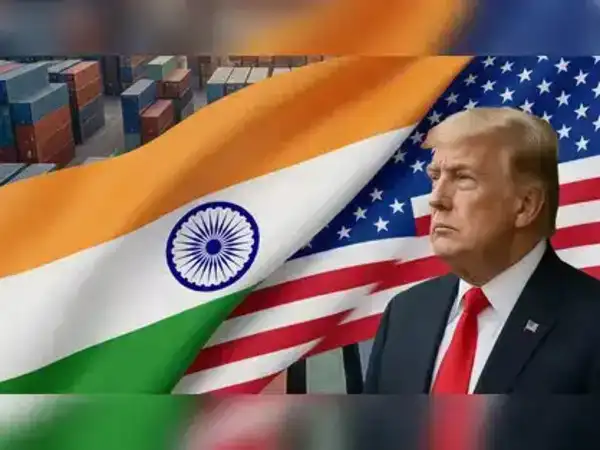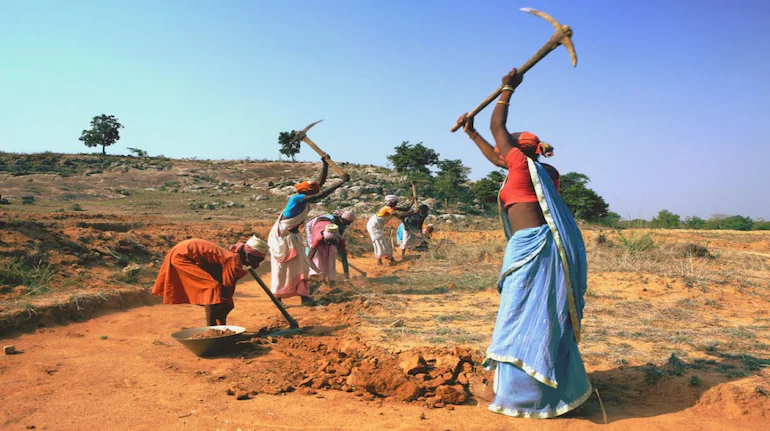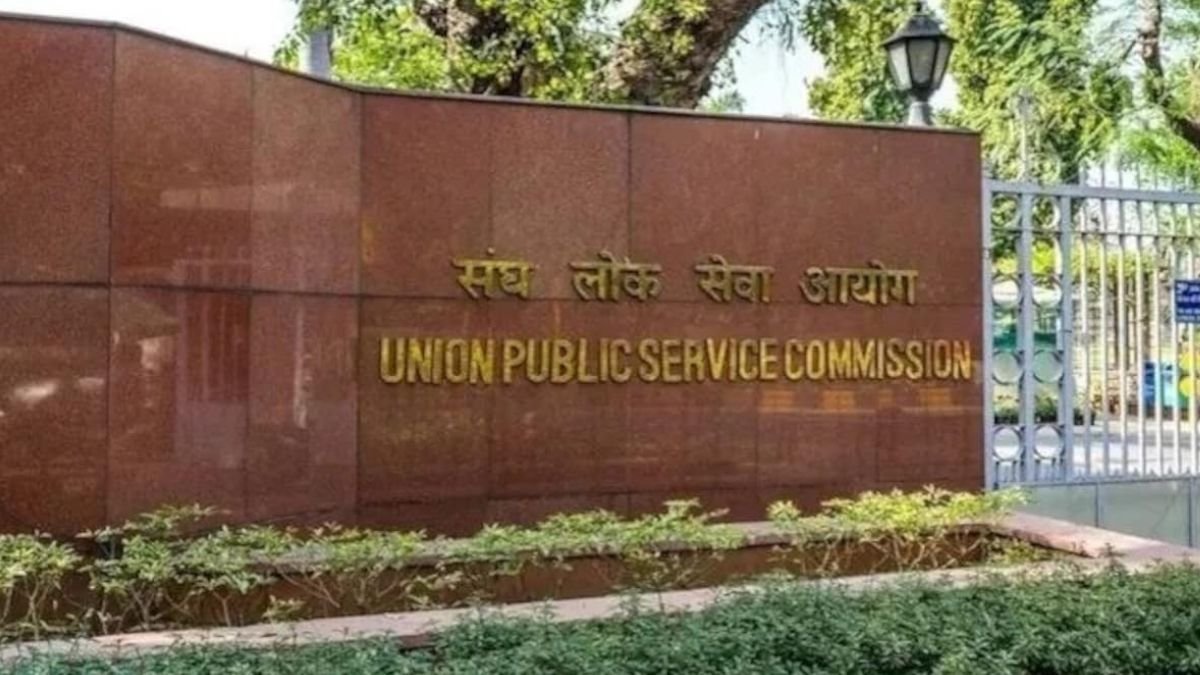Why in the News?
- US President Donald Trump has imposed harsh measures on India, including 50% tariffs on goods and an enhanced H-1B visa fee of $1,00,000, which may affect trade and employment.
- India’s food and defence security concerns have come into focus, with new initiatives such as Tata Advanced Systems’ defence factory in Morocco and discussions on long-term fertiliser partnerships with Morocco and other countries.
Key Highlights
- Trump’s Harsh Stand Against India
- At the UN General Assembly, Trump criticized India, China, Europe, and the UN.
- India faces 50% tariffs on goods and increased H-1B visa fees, which will hurt industries like pharmaceuticals, exports, and IT.
- These measures may stem from multiple reasons: India’s BRICS involvement, refusal to credit Trump in India-Pakistan de-escalation, and continued purchase of Russian crude oil.
- Economic and Diplomatic Fallout for India
- Prolonged tariffs could cause heavy losses, layoffs, and rupee depreciation.
- PM Modi avoided the UNGA session to evade direct confrontation with Trump, instead urging Indians to adopt Swadeshi practices and announced GST reforms to revive growth.
- RBI expects GDP growth of 5%, though concerns remain about falling below 6.2%.
- The two most critical sectors affected by trade tariffs are border security and food security.
- Atmanirbhar Bharat and Defence Self-Reliance
- PM Modi’s call for Atmanirbhar Bharat (self-reliant India) highlights dependence on foreign defence imports from Russia, France, and the US.
- A significant step: India’s first defence factory abroad opened in Morocco, inaugurated by Defence Minister Rajnath Singh.
- This marks a strategic collaboration and potential diversification of India’s defence production base.
- Food Security and Fertiliser Dependence
- India’s food security relies heavily on chemical fertilisers:
- 90% of urea production depends on imported natural gas.
- India imports phosphate rock, phosphoric acid, and finished phosphatic fertilisers like DAP (Diammonium Phosphate).
- India’s food security relies heavily on chemical fertilisers:
- Potash (K) is fully imported.
- Overuse of urea (Nitrogen) has degraded soils, calling for a balanced use of phosphatic fertilisers (DAP, SSP, TSP).
- Strategic Partnerships for Fertilisers
- Morocco, with 70% of world phosphate reserves, is vital for India’s fertiliser supply.
- India can collaborate with Morocco’s OCP Group (World’s largest phosphate mining and fertiliser group, Holds strong ties with the Moroccan government) for joint ventures in phosphate mining, phosphoric acid, and fertiliser production.
- Saudi Arabia has signed a deal to supply 3 million tonnes of phosphate annually, but its strategic defence partnership with Pakistan raises concerns for India.
- India must secure trusted long-term suppliers for gas, phosphate, and potash to ensure stable agricultural output.
Key Terms
- Atmanirbhar Bharat
- Government vision for self-reliant India.
- Aims to reduce dependence on imports in key sectors like defence and agriculture.
- Focuses on domestic manufacturing, R&D, and strategic industries.
- Encourages export competitiveness.
- Linked with long-term strategic autonomy.
- Fertiliser Security
- Ensures uninterrupted supply of Nitrogen (N), Phosphorus (P), and Potassium (K).
- Urea (N) depends on natural gas imports.
- Phosphatic fertilisers (DAP, SSP, TSP) depend on phosphate rock and acid imports.
- Potash (K) is fully imported.
- These are crucial for feeding India’s growing population.
- OCP Group (Morocco)
- Supplies India through partnerships with Paradeep Phosphates.
- Key for India’s long-term fertiliser strategy.
- Potential for joint ventures in mining and processing.
- Trade Tariffs
- Taxes imposed on imports, often used as economic tools or punishment.
- Trump’s 50% tariff on Indian goods affects exports.
- Leads to job losses, rupee depreciation, and trade imbalance.
- Can strain diplomatic relations.
- Pushes India towards diversification of trade partners.
- DAP (Diammonium Phosphate)
- Composition: 18% Nitrogen (N) + 46% Phosphorus (P₂O₅).
- Use: Provides both Nitrogen (for plant growth) and Phosphorus (for root development).
- Advantages: Highly soluble → nutrients quickly available to plants.
- Issue: India overuses DAP, leading to soil nutrient imbalance (excess N & P, lack of other nutrients).
- Source: India imports raw material (phosphate rock/phosphoric acid) for manufacturing.
- SSP (Single Super Phosphate)
- Composition: 16% Phosphorus (P₂O₅) + 12% Sulphur + some Calcium.
- Use: Supplies Phosphorus and also Sulphur, which is essential for oilseeds and pulses.
- Advantages: Improves root development and crop quality, especially in sulphur-deficient soils.
- Issue: Less popular compared to DAP (lower P content), though it is more balanced.
- Source: Made by treating phosphate rock with sulphuric acid.
- TSP (Triple Super Phosphate)
- Composition: 46% Phosphorus (P₂O₅) (no Nitrogen).
- Use: Provides concentrated Phosphorus for crops.
- Advantages: Same P content as DAP but avoids unnecessary addition of Nitrogen (which can be supplied separately as Urea).
- Issue: Less commonly used in India compared to DAP, but more efficient for balanced fertilisation.
- Source: Made by treating phosphate rock with phosphoric acid.
Implications
- Trade and Economy
- High tariffs and visa restrictions can reduce exports, weaken IT services, and increase unemployment.
- Rupee depreciation and inflation may worsen economic stress.
- Diplomatic Relations
- Trump’s stance could strain US-India ties, forcing India to balance between strategic partnerships and economic resilience.
- India’s BRICS membership may deepen geopolitical frictions.
- Defence Preparedness
- India remains dependent on foreign defence imports, making Atmanirbhar Bharat a long-term goal.
- The Morocco defence factory is a step towards defence manufacturing diversification.
- Food Security Concerns
- Heavy reliance on imported fertiliser inputs makes India vulnerable to global supply disruptions.
- Balanced use of Nitrogen and Phosphorus is necessary to prevent soil degradation.
- Geopolitical Risks
- Partnerships with countries like Saudi Arabia, aligned with Pakistan, may compromise India’s fertiliser security.
- Trustworthy, long-term collaborations (e.g., Morocco) are critical to safeguarding agriculture.
Challenges and Way Forward
| Challenges | Way Forward |
| High US tariffs and visa restrictions affecting Indian economy. | Strengthen diplomatic negotiations with the US and diversify export markets. |
| Dependence on foreign defence imports undermines Atmanirbhar Bharat. | Increase domestic R&D, joint ventures, and private participation in defence manufacturing. |
| Over-dependence on imported natural gas for urea. | Diversify gas supply sources and incentivize domestic exploration. |
| Soil degradation from excessive urea use. | Promote balanced fertiliser use (TSP, SSP, DAP) through awareness and subsidies. |
| Geopolitical risks in fertiliser supply chains (Saudi-Pakistan ties). | Deepen long-term partnerships with Morocco and reliable allies for fertilisers. |
Conclusion
India is facing dual challenges of external trade pressures from the US and internal vulnerabilities in food and defence security. While Atmanirbhar Bharat is the goal, India remains dependent on imports for fertilisers, natural gas, and defence equipment. Proactive diplomatic engagement, strategic partnerships, and domestic reforms will be critical to safeguarding India’s economy, agriculture, and security in the coming years.
| EnsureIAS Mains Question
Q. India’s food and defence security are increasingly vulnerable due to external dependencies. Critically examine how strategic partnerships and domestic reforms can help India achieve Atmanirbhar Bharat in these two critical sectors. (250 Words) |
| EnsureIAS Prelims Question
Q. With reference to India’s food and defence security, consider the following statements: 1. Nearly 90% of India’s urea production depends on imported natural gas. 2. Morocco accounts for the largest share of global phosphate reserves. 3. Tata Advanced Systems has set up India’s first overseas defence factory in Morocco. 4. Potash (K), a key fertiliser input, is fully domestically produced in India. Which of the above statements are correct? (a) 1, 2 and 3 only Answer: (a) 1, 2 and 3 only Explanation: Statement 1: Correct. Almost 90% of urea in India depends on imported natural gas. Statement 2: Correct. Morocco holds nearly 70% of world phosphate reserves. Statement 3: Correct. Tata Advanced Systems inaugurated a defence factory in Morocco. Statement 4: Incorrect. Potash is fully imported, not domestically produced. |
|
Also Read |
|
| UPSC Foundation Course | UPSC Daily Current Affairs |
| UPSC Monthly Magazine | CSAT Foundation Course |
| Free MCQs for UPSC Prelims | UPSC Test Series |
| ENSURE IAS NOTES | Our Booklist |





